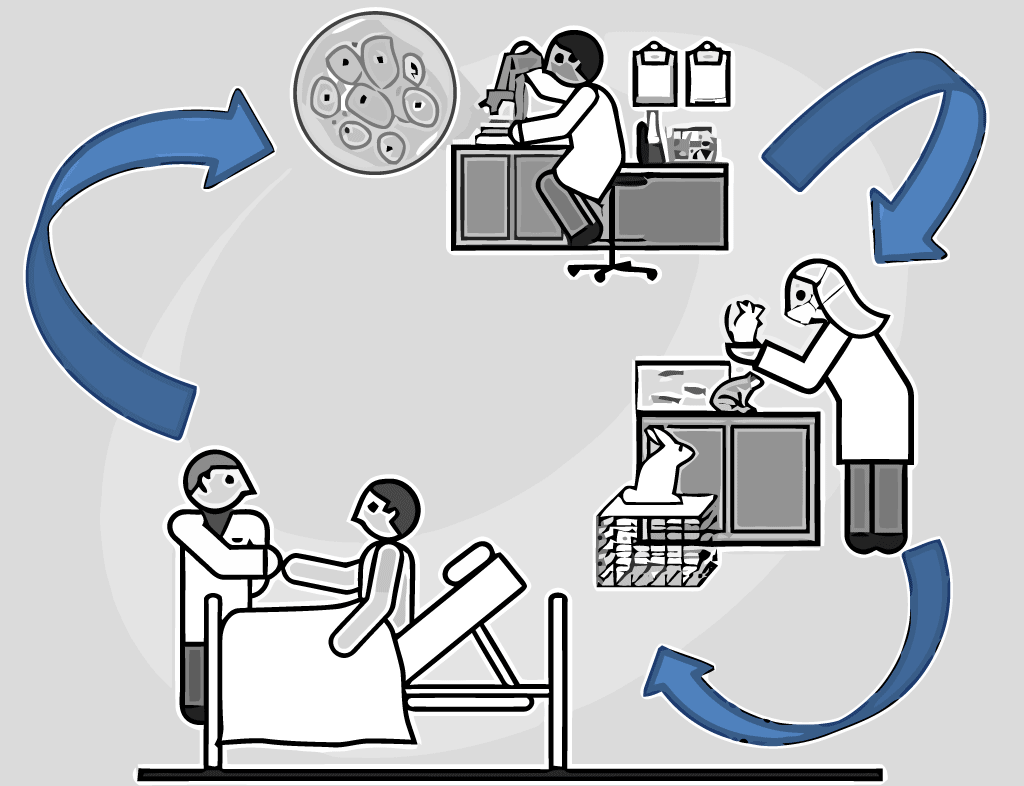Amyloidosis is a rare disease that occurs in several forms and in the familial transthyretin form can lead to eye problems.
Types of amyloidosis
All types of amyloidosis are due to proteins that take on an abnormal configuration and form amyloid fibrils, which accumulate in various tissues and organs and cannot be easily broken down by the body.
These deposits interfere with the normal function of the organ in which they are found and depending on the site of accumulation can lead to pathological conditions, both systemic and localised, when they affect only one organ or tissue.
The severity of the disease depends precisely on the organs affected by the amyloid deposits.
Characteristics of amyloidosis
Age of debut
Amyloidosis generally appears in individuals in middle age and beyond, but can also occur between the ages of 30 and 40, or even earlier.
Symptoms
Depending on the part of the body affected, amyloid deposits can cause weight loss, fatigue, shortness of breath, dizziness while standing, swelling of the ankles and legs, numbness and tingling in the hands and feet, alternating bouts of constipation and diarrhoea, and a rapid feeling of fullness after eating.
In addition, if a patient tends to bruise easily, especially around the eyes (periorbital purpura)it is very likely that the cause is amyloidosis.
Transthyretin amyloidosis (TTR)
Among patients with familial amyloidosis, the mutation in the transthyretin (TTR) protein is the most common type and it has been noted that patients with TTR amyloidosis often have ocular involvement, especially in the vitreous.
Ocular aspects
Researchers from the Departments of Ophthalmology, in partnership with researchers from the Department of Haematology, at the Mayo Clinic in Rochester(Minnesota, USA) have carried out an interesting study, Ocular Manifestations of Familial Transthyretin Amyloidosis in which an analysis of the types and frequency of ocular manifestations in TTR amyloidosis was presented.
Study protocol
263 patients with a diagnosis of transthyretin amyloidosis were enrolled, with follow-up between 1970 and 2014. The 54 patients who developed eye problems underwent a comprehensive eye examination on average every 4.25 months after the onset of systemic symptoms.
The sample of patients
Most of the patients with ocular symptoms were women and, clinically, the most frequent problem was a significant deterioration in visual acuity compared to the phase before the onset of amyloidosis.
Eye problems have been reported:
- amyloid vitreous
- neurotrophic keratitis
- formation of retinal neovases
- glaucoma
The types of glaucoma ranged from POAG (primary open-angle glaucoma) to exfoliating and neovascular forms (following occlusion of the central retinal vein by amyloid fibre deposits).
Treatment
10 patients required vitrectomy for visually significant vitreous amyloidosis, with significant improvement in visual acuity from a baseline value of logMAR 0.70 (Snellen equivalent 20/100 ) to logMAR 0.05 ( Snellen equivalent approx. 20/20 ), P=0.003.
Genetic causes
From an aetiological point of view, the following have been associated with vitreous amyloidosis three TTR mutations, Glu89Lys, Gly47Arg and Gly6Ser homozygouspreviously undescribed.
Italian research
Precisely on the subject of amyloidosis, Italian research has recently come to the fore in Europe with two studies carried out by the Centre for the Study and Treatment of Systemic Amyloidosis of the Fondazione Irccs Policlinico San Matteo.
The first study, published in Circulation, identified a new hereditary form of amyloidosis, caused by a mutation in the Apoa1 gene.
This mutation causes the deposition of amyloid fibrils formed from the apolipoprotein A-I protein in several organs. A discovery of particular note is that this rare form of amyloidosis can mimic other more common variants, challenging current diagnostic algorithms.
The second study, "Predictors of Early Death in Patients With Wild-Type Transthyretin Cardiac Amyloidosis. published in the Journal of the American Heart Association', focused on wild-type transthyretin amyloidosis.
Research has identified some key clinical characteristics at diagnosis, such as age, levels of cardiac biomarkers and defined a frailty scale.
The combination of these data makes it possible, among other things, to identify patients at increased risk of early death.
Conclusions and research perspectives
These are important experimental results, as they may make it possible to optimise the available clinical and therapeutic resources and ensure that drug treatments are targeted to the patients most likely to benefit.
This type of scientific development highlights the central role of translational research, in which our country has peaks of excellence for improving diagnostic accuracy and therapeutic efficacy in complex and often under-diagnosed diseases.
Search translational
Recall that the translational researchin the medical field is the branch of research that aims to bridge the gap between the basic research (which is the experimental research, which takes place in the laboratory) and the clinical research (concerning studies leading to applications on patients).
It aims to translate scientific discoveries into concrete clinical applications to improve people's health and well-being.
It therefore constitutes a real bridge between the laboratories and the patients' bed.
- Reynolds MM, Veverka KK, Gertz MA, et al. Ocular Manifestations of Familial Transthyretin Amyloidosis. Am J Ophthalmol. 2017 Nov;183:156-162. doi: 10.1016/j.ajo.2017.09.001. Epub 2017 Sep 11. PMID: 28911993.
- Milani P, Sanna GD, Mussinelli R, et al. Predictors of Early Death in Patients With Wild-Type Transthyretin Cardiac Amyloidosis. J Am Heart Assoc. 2025 Jan 7;14(1):e036755. doi: 10.1161/JAHA.124.036755. Epub 2024 Dec 24. PMID: 39719432.
